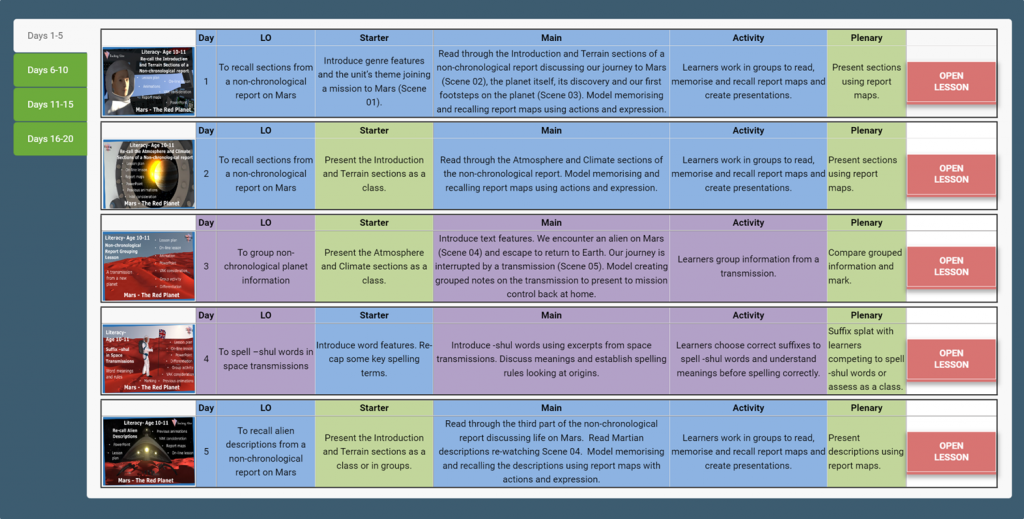Writing
The writing unit follows a set colour coded order, based on Blooms Taxonomy– see image below.
Each unit starts with one or two days where learners get to know the text through pictures, words and drama. They produce a map which allows them to memorise the text or parts of the text, which is reviewed at set points as the unit progresses. This supports learners in absorbing the text, sentence and word features of a text and allows them to consider a number of learning styles. The process also encourages team work and confidence and hopefully allows the features to then appear naturally in shared and independent writing towards the end of the unit. Depending on a teacher’s class, they may want to shorten or lengthen the revision periods, or concentrate on groups with specific learning styles that would benefit from this approach.
Set days in the writing unit are aimed at preparing learners for independent formal assessments in reading, grammar, punctuation and writing. We look to integrate this naturally into the unit, in a ‘drip by drip’ approach, and mix these sessions up with more creative lessons. In this preparation, we aim to be detailed and extensive, giving learners as much flexibility as possible, so they are confident when applying their knowledge to problems. These sessions may be as independent or as supported as desired.
After we are familiar with the text, we break up the text and analyse it in terms of its structure, word and sentence level features. In this analysis, we look at examples from the unit’s class text and examples based on the unit’s theme. This provides a context to lead into becoming more creative in our learning.
In our creation stage, learners encounter freedom to work in groups to generate ideas in preparation for writing. They have a fixed purpose, based on the class theme, and a set time to prepare a performance, presentation or project.
Learners now apply their analysis and creation in a supported environment. There are regular shared writing and evaluation sessions, with learners then receiving feedback. This is a section by section process, where the teacher writes up to a point and then the learners write to that point. It is important the class write at the same pace, allowing learners to concentrate on including past teaching in their writing.
Finally, learners evaluate their writing and learning from throughout the writing unit.
Reading
Reading units coincide with a unit’s theme using reading comprehension texts, spellings, handwriting and research that links to contexts within a theme.
They are aimed to add contexts to a theme, whilst ensuring coverage of government curriculums and achievement in assessments.
Maths
A maths unit again follows a set colour coded order, based on Blooms Taxonomy.
Each unit starts with one or two days where learners review previous learning and a context is introduced through animation.
After this revision, areas are introduced and analysed, linked to contexts in the animated storyline.
Set lessons or parts of lessons in the maths unit are aimed at preparing learners for independent formal assessments.
In our creation stage, learners encounter freedom to work in groups using the maths they have used to solve a problem. They have a fixed purpose, based on the class theme, and a set time to prepare a performance, presentation or project.
Learners now apply their analysis and creation in a supported environment. There are a number of problem solving sessions, with learners then receiving feedback.
Finally, learners evaluate their learning from throughout the maths unit.
Cross-curricular
A cross-curricular unit includes a number of lessons that link to contexts from the unit theme.
They are aimed to immerse learners further into the theme, whilst ensuring coverage of government curriculums and achievement in areas of learning.

